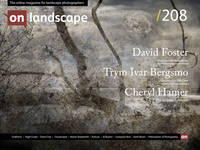A Revolution

Trym Ivar Bergsmo
Trym Ivar Bergsmo is a Norwegian photographer based in Harstad, North Norway. He got his BA in photography at Brooks Institute of Photogragphy, Santa Barbara, California.
Bergsmo has worked in the arctic for more than 25 years documenting the lives of the people of the north, their landscape and culture. He has made several books and had exhibitions all across Europe.
About 10-12 years ago there was a revolution. Social media and digital photography created new ways and opportunities to record and share our lives, experiences and adventures. All of a sudden, we could see where our friends and relatives travelled. We saw images of places we had been to in our dreams, we saw what our friends ate for breakfast on the other side of the planet, we could ride with them a boat through beautiful or harsh surroundings.
Then it changed. We started to put ourselves into the images, together with the landscape or a famous landmark. We moved ourselves into the foreground. We didn’t go to beautiful places solely to experience the magnificent historical sights, the manmade constructions, the natural wonders, or beautiful landscapes. No, we went there to make a selfie.
There is nothing new about this. We have always made images of ourselves. Portraits, for the family albums, Christmas cards of the family and portraits to hang on the wall, to remember our ancestors. It’s a way to define our identity. With the development of social media, a totally new way of thinking about self-portraits developed. We are now able to share an image the instant it happens. While there used to be a delay due to processing, printing and publishing, we can now go live as long as we are connected to a network.
The life span of most photographs has become shorter. How does this affect the photographer? Have the intentions and motivation behind the creation of an image changed? How do all the different ways a photograph is being used to influence our creative process? If the "function" of a photograph is more diverse now than what it used to be, how can we take advantage of this in the process of making better images of the landscape?


